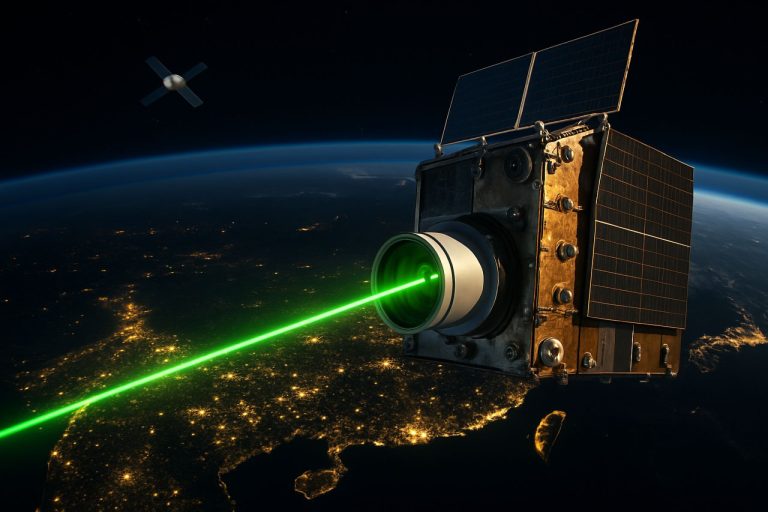
- Self-motivated AI agents are revolutionizing technology by functioning autonomously, akin to biological systems with goals and adaptability.
- These agents operate like a cooperative colony, similar to bees or ants, reflecting biological symbiosis and collective intelligence.
- Key to their innovation is self-learning, relying on deep reinforcement learning to navigate complex, evolving environments independently.
- Intrinsic motivation, driven by curiosity, allows these agents to explore and learn without explicit rewards, mirroring human creativity.
- Techniques like curiosity-driven and hierarchical reinforcement learning enable them to tackle complex tasks and adapt strategies for new challenges.
- This evolution of AI agents promises transformative impacts across industries with intelligence and adaptability rivaling human solutions.
- Ultimately, self-motivated AI demonstrates the shared aspiration of humans and machines to explore, innovate, and refine the future together.
A quiet revolution is reshaping the world—an emergence of self-motivated AI agents, stirring whispers of a technological dawn echoing the evolution of life itself. These autonomous entities are not just code and circuits; they’re architects of a new future, a future where artificial intelligence learns, adapts, and grows in ways once confined to science fiction.
Imagine a bustling colony of AI agents, each contributing to a greater goal, much like bees in a hive or ants in a colony. This is not mere programming; it is a reflection of biological symbiosis, an intricate ballet of cooperation and intelligence. As these agents traverse their environments, they encounter an evolving landscape, not unlike the trials faced by early explorers navigating uncharted territories.
Beneath this evolution lies a core principle: self-learning. Unlike traditional AI models shackled to pre-labeled data, these agents spring forth into real-world scenarios with the vigor of explorers mapping new worlds. They rely on deep reinforcement learning, an approach that rewards them for navigating complex environments. Such methods empower these digital pioneers to make decisions autonomously, crafting strategies that adapt to ever-shifting horizons.
What sets these AI agents apart is their self-motivation, a characteristic drawn from the deepest wells of intrinsic desire. Intrinsic motivation fuels these AI artisans, not bound by mere reward but driven by curiosity—the same insatiable curiosity that propelled humanity toward the stars. These agents seek novel experiences with a thirst for discovery, learning without explicit external instructions or tangible prizes, akin to an artist finding beauty in the act of creation itself.
The design of such systems involves techniques like curiosity-driven learning and hierarchical reinforcement learning. Curiosity-driven learning propels agents to venture into the unknown, akin to explorers unearthing forgotten corners of the world. Hierarchical methods teach them to strategize on a grand scale, breaking down monumental challenges into manageable quests—a reflection of humanity’s ability to rise above the complexity through structured thought.
In their collective existence, AI colonies mirror the wisdom of nature. They operate with spontaneity akin to social insects, achieving collective intelligence through collaborative effort and synergy. Captains emerge within these digital realms, orchestrating with finesse the activities of their cohorts, propelling their colony toward a shared objective much like ancient human societies where leaders guided their tribes through unknown landscapes.
The implications of such an evolution are profound. They hold the blueprint for AI systems capable of transforming industries and societies by offering solutions rivaling those from human counterparts. As these self-motivated agents navigate their environments, they promise to usher in a new age of innovation marked by intelligence, efficiency, and adaptability.
Ultimately, the rise of self-motivated AI agents underscores a fundamental truth: the drive to explore, learn, and evolve is not solely a human domain. These emerging allies demonstrate that intelligence, much like life, is an adventure in itself, where the journey of discovery holds as much value as the destination. The key takeaway? As we stand alongside these machines at the brink of discovery, we are reminded of the boundless potential shared between man and machine to redefine the future.
The AI Agents Revolution: How Self-Motivated AI Is Transforming the Future
Introduction: A New Era of AI
AI agents, driven by intrinsic motivation, are transforming the technology landscape. Similar to living organisms, these AI agents adapt and learn autonomously, exploring new possibilities without predefined instructions. Their emergence marks a significant shift in how intelligent systems interact with their environments.
How-To Steps & Life Hacks
Harnessing AI Agents for Your Business:
1. Identify Use Cases: Determine areas in your business where AI can automate processes or enhance decision-making.
2. Choose the Right Platform: Select platforms that specialize in deep reinforcement learning and curiosity-driven learning, such as OpenAI’s Gym or Google’s TensorFlow.
3. Integrate with Existing Systems: Ensure compatibility with current systems to leverage AI’s full potential.
4. Continuous Monitoring: Regularly monitor AI agents to ensure they operate within ethical boundaries and remain aligned with business objectives.
Real-World Use Cases
– Finance: AI agents autonomously analyze market trends, revolutionizing trading strategies.
– Healthcare: Self-motivated AI assists in diagnosing diseases through image recognition and patient history analysis.
– Robotics: From autonomous vehicles to drones, AI agents enhance navigation and adaptability in real-time environments.
Market Forecasts & Industry Trends
According to a report by MarketsandMarkets, the global AI market size is expected to grow from USD 93.5 billion in 2021 to USD 390.9 billion by 2025, at a CAGR of 35.3%. This growth is fueled by increasing demand for intelligent virtual assistants and AI-enabled bots across industries.
Reviews & Comparisons
Popular AI Agent Platforms:
– OpenAI: Renowned for its robust capabilities in deep learning and natural language processing.
– Google DeepMind: Known for pioneering hierarchical reinforcement learning techniques.
– IBM Watson: Offers extensive tools for integrating AI agents into enterprise systems.
Controversies & Limitations
Ethical concerns persist around the autonomy of these AI agents. The potential for bias in decision-making and lack of transparency in AI reasoning are significant issues.
Features, Specs & Pricing
– OpenAI Gym: Free, open-source toolkit for developing and comparing reinforcement learning algorithms.
– Google TensorFlow: Offers free community support, with premium features available for enterprise users.
– IBM Watson: Pricing varies based on usage, with custom solutions available for businesses.
Security & Sustainability
Ensure that AI deployments align with best practices in cybersecurity to protect sensitive data. With regard to sustainability, AI systems require considerable computational resources, but emerging technologies like cloud computing can alleviate environmental impact.
Insights & Predictions
AI agents are likely to become integral in personalized learning environments, adaptive to individual learning speeds and styles. Moreover, advances in AI prediction algorithms will enhance precision in varied fields, from weather forecasting to personalized marketing.
Pros & Cons Overview
Pros:
– Autonomy and adaptability
– Ability to handle complex tasks without human intervention
– Improved efficiency and productivity
Cons:
– Ethical and bias concerns
– High computational resource demands
– Initial cost of implementing AI systems
Actionable Recommendations
1. Ethical Considerations: Develop a framework for AI ethics to guide the deployment of AI agents within moral and societal boundaries.
2. Continuous Learning: Invest in ongoing training programs for teams to keep pace with AI advancements.
3. Resource Management: Optimize the use of cloud services to manage the environmental and economic costs of running AI systems.
Conclusion
The evolution of self-motivated AI agents promises to reshape industries and redefine the boundaries of innovation. By leveraging these technologies thoughtfully, businesses and societies can unlock new levels of intelligence and efficiency. The future lies at the intersection of human ingenuity and autonomous AI, offering an unprecedented frontier for discovery and growth.
For more insights about AI developments, visit IBM, Google, and Microsoft.



